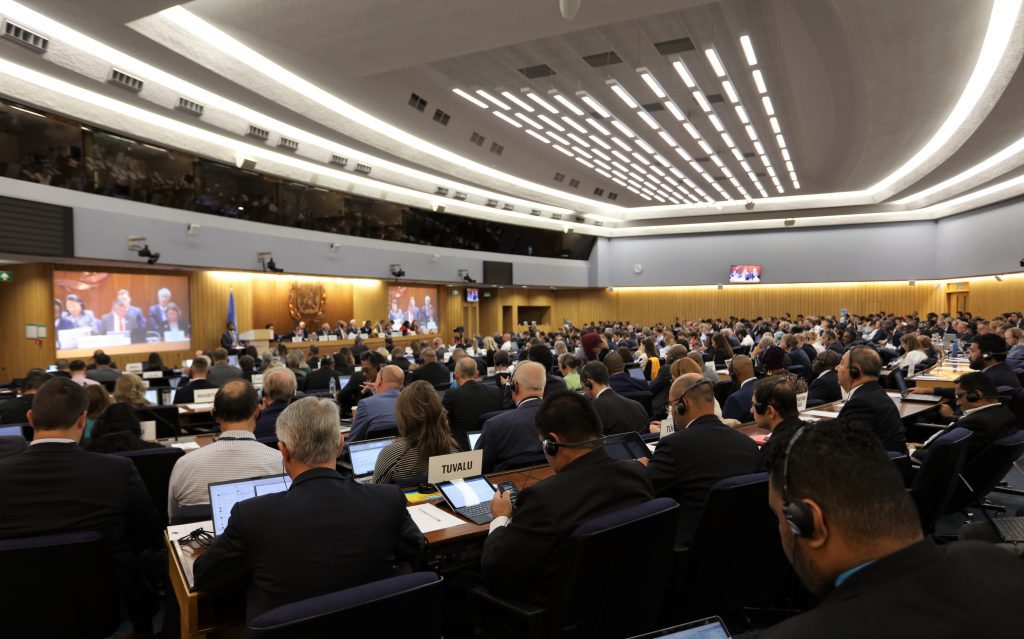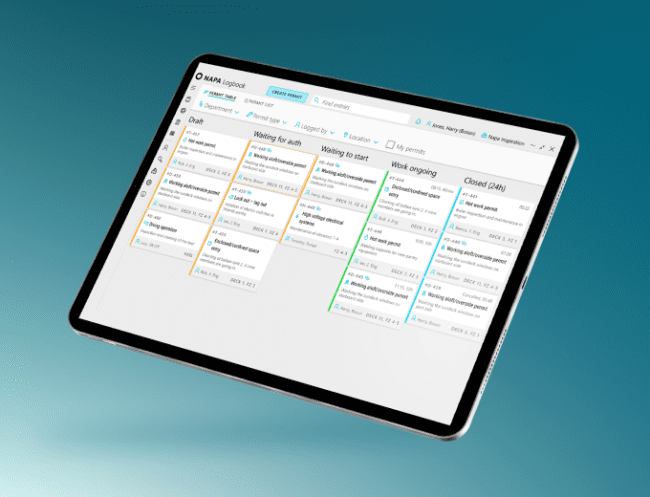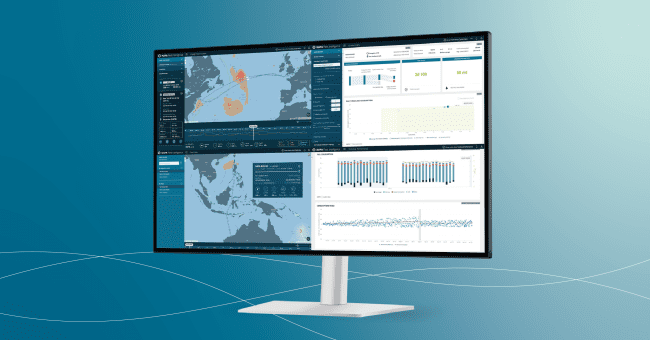MEPC 80 has spoken, but what shipping does next will speak loudest
The full outcome of the IMO’s historic agreement on shipping’s decarbonization will be defined by what the industry decides to do next. Although not as categorical as many had hoped, the new strategy’s enhanced ambition calls for immediate action – and a lot can be done already.

MEPC 80, July 2023. Photo courtesy of the IMO.
It may not be perfect, but the IMO’s revised strategy on greenhouse gas (GHG) emissions has provided the shipping industry with something it had been demanding for a long time: greater clarity on what decarbonization progress will be expected this decade and the following two. In addition to the enhanced net-zero ambition for 2050, the indicative checkpoints aimed at reducing total GHG emissions from international shipping by “20% striving for 30% by 2030”, and “70% striving for 80% by 2040”, compared to 2008 levels, are percentages that will become increasingly familiar talking points in years to come.
Are these goals as ambitious as we could have hoped? The short answer is no. Many observers, environmental groups, and some IMO delegates themselves were disappointed by the vaguely worded and non-binding GHG reduction targets. Most importantly, the strategy fails to align shipping with the Paris Agreement target of limiting global warming to 1.5°C by the end of this century, although it keeps it within reach, according to an analysis by UMAS.
A strong message: change is coming, and fast
Yet there is cause for optimism. MEPC 80 has sent a series of important signals to the industry. Firstly, the level of ambition has been significantly strengthened. A much-needed net-zero emissions goal “by or around” 2050 has now been formally adopted by the IMO’s 175 member states. In other words, the direction of travel has been set: full decarbonization in shipping must happen by the middle of this century.
Secondly, although non-mandatory, the adoption of interim goals for 2030 and 2040 clearly indicates the need for more focus on tangible and measurable actions that can take place during this decade to reduce greenhouse gas emissions from the maritime sector. An approach based on “sitting back and waiting for new fuels to become available” is now untenable – action and progress must happen now. After all, 2030 is a mere 6.5 years away.
With the goals now set, the focus must turn to how these will be achieved in practice. The strategy doesn’t yet outline how it intends to drive change. That will be a question for the next MEPC meetings, where discussions will take place about a proposed fuel standard and carbon pricing mechanism, which according to the agreed timeline, should be adopted in 2025 to potentially enter into force from 2027.
But there is no need to wait. There is a lot that we can do as an industry to take control of our own emissions and draw our own pathways towards net-zero in a way that makes sense for our fleets and businesses. Across shipping, pioneers have already started the transition, and their experience shows that the sooner companies start planning the journey, the better off they will be.
Practical steps forward
But where to start? By making the most of three assets that shipping already has at its fingertips: alternative propulsion and energy efficiency technology, comprehensive ship and fleet operational data, and collaborative projects.
Action one
Use available technology to slash GHG emissions today – To achieve the IMO’s goal of reducing GHG emissions by at least 20%, striving for 30% this decade, the industry will need to make the most of existing technology that can already reduce its carbon footprint now. Indeed, zero-carbon fuels won’t be available at any meaningful scale for at least another decade, so progress will be achieved through alternative propulsion and energy efficiency technologies, such as wind-assisted propulsion and air lubrication, alongside operational measures such as voyage optimization and weather routing solutions. According to McKinsey, a consulting firm, about 80% of shipping’s decarbonization progress this decade will come from efficiency measures, and about one-third to 2050.
Action two
Harness your ship’s data to boost efficiency – as the saying goes, “if you don’t measure it, you can’t improve it”. Thus a key starting point to reduce GHG emissions from any vessel is to measure them. But data can do more than just be recorded for regulatory reporting; it is also an opportunity to benchmark and improve those results. The wealth of data that is collected onboard ships can be turned into a goldmine of insights to help unlock new operational efficiencies, optimize voyages, enhance safety, and reduce fuel consumption together with GHG emissions. But to seize these opportunities, companies need to implement a systematic way of capturing, integrating, and analyzing data. For instance, electronic logbooks are an easy-to-deploy, turnkey solution that makes the data accessible in one place, where it can generate actionable insights. In other words, by making the most of their ships’ data, companies can lay the right foundations to fully understand their fleets and make the best possible decisions throughout the decarbonization transition.
Action three
Learn and experience from collaborative projects – as we enter this era of profound transformation, we should make the most of collaborative projects to learn from each other’s experience and combine our diverse expertise to innovate in ways that work in practice for our companies. Much more can be done to build and share knowledge, create new contractual frameworks, and even combine clean technologies for maximum impact. For example, our recent partnership with Norsepower and Sumitomo has shown that combining wind propulsion with weather routing can achieve much larger emissions reductions than either of the technologies alone. Effective cooperation is a win-win situation in which all partners improve their outcomes, gain clarity, and future-proof their assets for the critical transition ahead.
Multiple driving forces towards zero
It is also important to remember shipping’s decarbonization isn’t solely driven by IMO – national, regional and industry forces are also at play. On the regulatory side, the targets of this latest GHG strategy are hardly the only emissions reduction goals that owners will need to meet in the short and medium term – the EU ETS and HELCOM, for instance, will also impose emissions reductions from shipping in the near future.
Additional pressure will come from shipping’s key stakeholders, such as investors, financiers, insurers, and cargo owners. As society’s expectations shift, capital injections will increasingly come with strict environmental, social and governance (ESG) criteria, meaning that companies will need to demonstrate climate action to secure funding. In short, doing good business and doing good will go hand in hand.
The industry’s zero-carbon path is as multifaceted as it is complex – but we should not let ourselves be distracted from the bigger picture. Every ton of carbon that isn’t released into the atmosphere matters; every fraction of a degree closer to the 1.5-degree target of the Paris Agreement keeps the planet more livable.
MEPC 80 has sent a clear message that the industry needs to change and that this must begin now. We already know where to start. History will judge us not just on our capacity to agree on new targets but chiefly on the actions that we will take to translate these ambitions into action and results.



